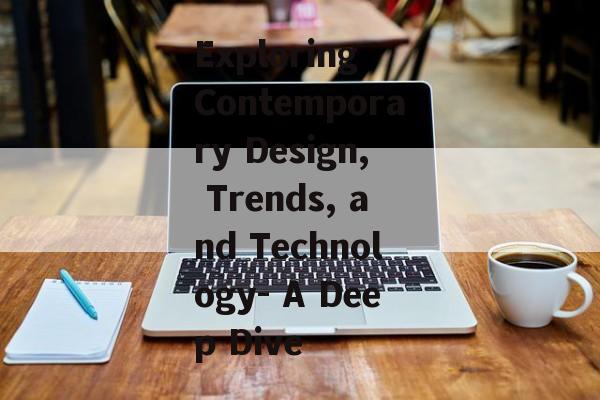The Evolution of Contemporary Design
Contemporary design (keyword) is characterized by its clean lines, minimalism, and innovative use of materials. It represents a blend of traditional and modern elements, creating a unique aesthetic that is both functional and visually appealing. This design philosophy has evolved over the years, influenced by global trends and technological advancements.
In the realm of interior design, contemporary spaces often feature open layouts, neutral color palettes, and statement pieces that highlight the sleekness of the design. The use of sustainable materials is also a significant aspect of contemporary design, reflecting the growing awareness of environmental issues.
How does contemporary design differ from modern design? While modern design is rooted in the mid-20th century and focuses on simplicity and functionality, contemporary design is more fluid, adapting to current trends and technological innovations.
Contemporary Trends in Fashion

Fashion is another field where contemporary trends (keyword) play a pivotal role. The fashion industry is constantly evolving, with new styles and designs emerging each season. Contemporary fashion is all about experimentation and breaking away from traditional norms.
Designers are incorporating sustainable practices, such as using eco-friendly materials and supporting ethical manufacturing processes. This shift towards sustainability aligns with the broader contemporary movement, which emphasizes responsibility and consciousness.
Additionally, the rise of fast fashion has led to a more democratic approach to fashion, with trends being accessible to a wider audience. How does this impact the traditional fashion industry? It challenges designers to be more innovative and responsive to consumer demands.
The Role of Contemporary Technology
Contemporary technology (keyword) has revolutionized various aspects of our lives, from communication to healthcare. The rapid advancements in technology have made it possible to achieve tasks that were once considered impossible.
Artificial intelligence, blockchain, and the Internet of Things are some of the cutting-edge technologies shaping our contemporary world. These technologies have not only enhanced productivity but also raised ethical questions about privacy and security.
How do these technological advancements impact our daily lives? From smart homes to virtual reality, contemporary technology is making life more convenient and connected.
Contemporary Education: A New Era
Education is another sector that has been transformed by contemporary practices (keyword). The traditional classroom setup has given way to more flexible and interactive learning environments. Digital learning tools and online courses have made education more accessible and personalized.
Contemporary education also emphasizes critical thinking and problem-solving skills, preparing students for the challenges of the modern world. How does this shift impact the future of work? It ensures that the workforce is adaptable and innovative.
Moreover, the integration of technology in education has opened up new opportunities for lifelong learning, allowing individuals to upskill and reskill as needed.
Contemporary Art: Expressing Modern Realities
Contemporary art (keyword) reflects the realities and emotions of our time. It encompasses a wide range of styles and techniques, from abstract to conceptual art. Artists are using their work to address social, political, and environmental issues, making art a powerful medium for change.
How does contemporary art differ from traditional art? It is more inclusive and diverse, celebrating the uniqueness of each artist's perspective. This inclusivity extends to the audience, with contemporary art being more accessible and engaging.
The use of technology in contemporary art, such as digital art and virtual reality installations, further blurs the lines between art and technology.
Contemporary Architecture: Shaping the Urban Landscape
Contemporary architecture (keyword) is shaping the urban landscape with its innovative designs and sustainable practices. Architects are focusing on creating structures that not only look aesthetically pleasing but also serve a purpose and contribute to the community.
From green buildings to adaptive reuse projects, contemporary architecture is redefining the way we think about spaces. How does this impact the environment? It promotes sustainable living and reduces the carbon footprint of our built environment.
The use of contemporary design principles in architecture also ensures that buildings are functional and adaptable to the changing needs of society.
In conclusion, the term 'contemporary' represents a dynamic and ever-evolving concept that influences various aspects of our lives. From design and fashion to technology and education, contemporary practices are shaping a new era of innovation and responsibility. By embracing contemporary trends and technologies, we can create a more sustainable and connected future.










评论列表